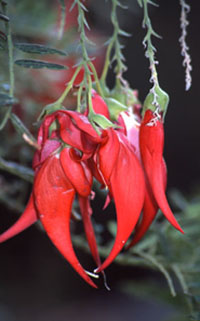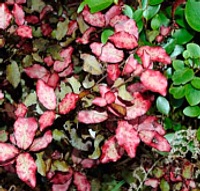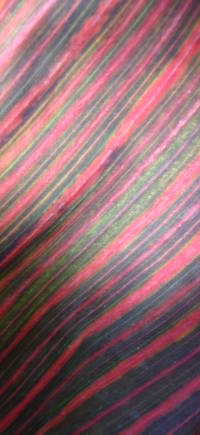
It is true however, that the wild population is down to one known plant, on an island in the Kaipara Harbour (which, btw, has no cows or grapes on it). The Maori did their best to move it around the country centuries ago, cultivating it in areas where they lived. Not only was it visually arresting, but the scent was used in body oils. The nectar would have attracted tui, and as a legume it would have contributed to the fertility of the soil.
If it weren’t for its incredible looks, the kowhai ngutu kaka would have died out a long time ago. Luckily, gardener’s have kept this species alive internationally. Like most pretty things, kowhai ngutu kaka is a bit sensitive – weeds, insects, snails, drought, browsing and wind all do damage – and needs the loving hand of a gardener to help it along. The plant is a beautiful reminder of just how important gardeners can be.
Beautiful image courtesy of, and copyright to David Wall Photography.
More stunning photos of kaka beak at Arkive.


 Terrific work is happening in the recording of traditional food knowledge (TFK) from indigenous people around the world. TFK refers to the cultural tradition of sharing food, recipes and cooking skills and techniques and passing down that collective wisdom through generations. I see this as a very important for two reasons:
Terrific work is happening in the recording of traditional food knowledge (TFK) from indigenous people around the world. TFK refers to the cultural tradition of sharing food, recipes and cooking skills and techniques and passing down that collective wisdom through generations. I see this as a very important for two reasons: You can tell that summer and the festive season are here. It’s difficult to miss with the tell-tale red lights of the pohutukawa (Metrosideros excelsa) signalling the way. The pohutukawa is also known as the New Zealand Christmas Tree because of the beautiful crimson display that flares at the end of November and right through January.
You can tell that summer and the festive season are here. It’s difficult to miss with the tell-tale red lights of the pohutukawa (Metrosideros excelsa) signalling the way. The pohutukawa is also known as the New Zealand Christmas Tree because of the beautiful crimson display that flares at the end of November and right through January.